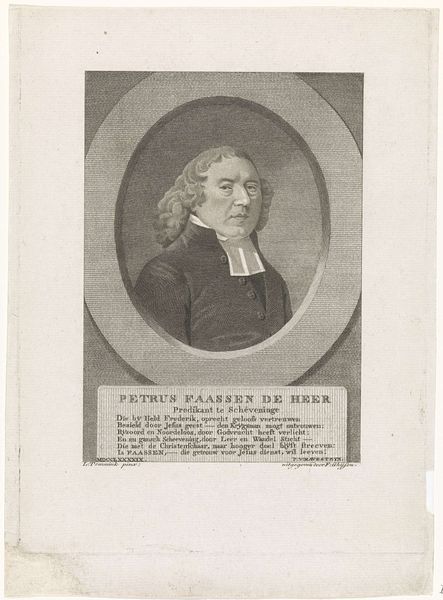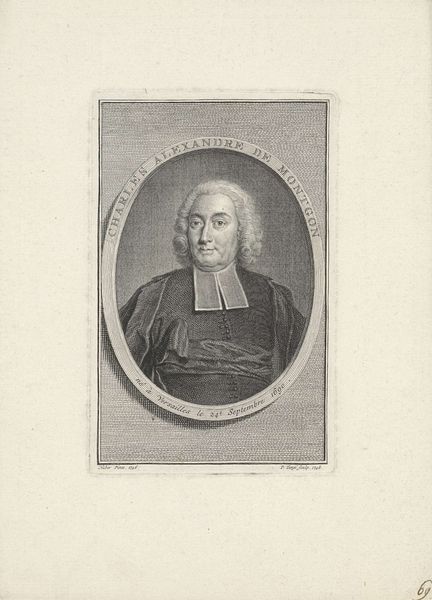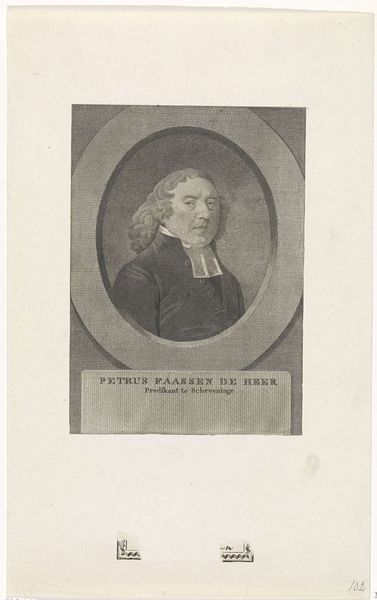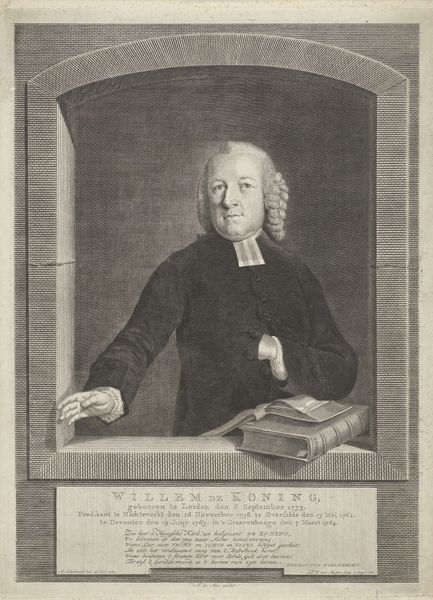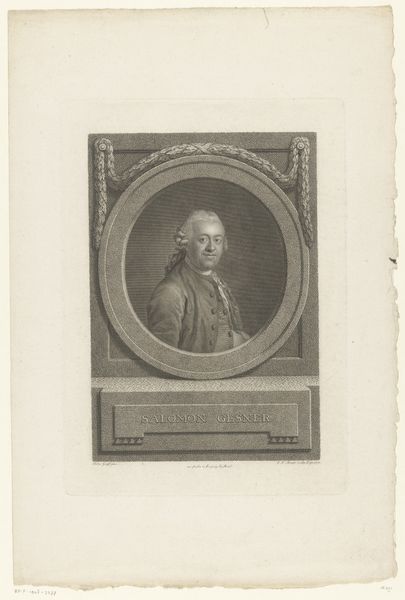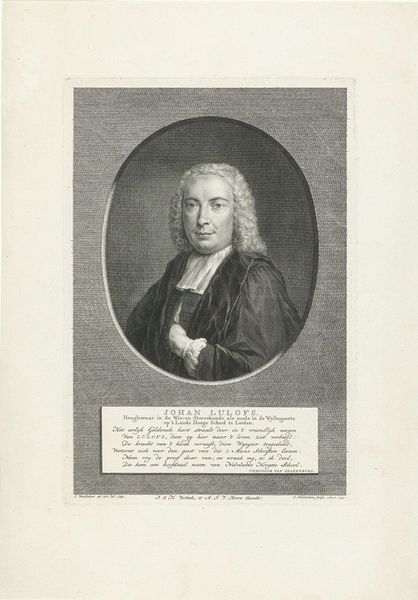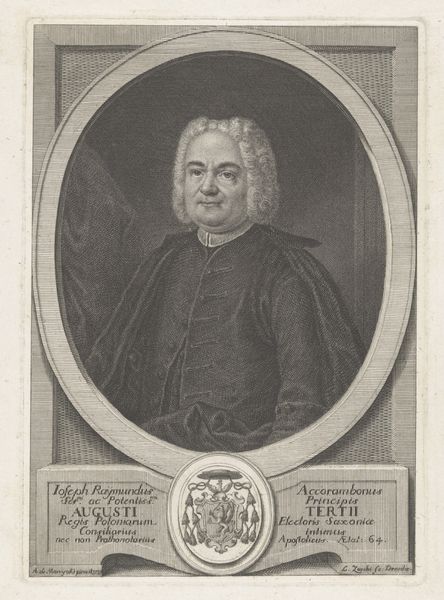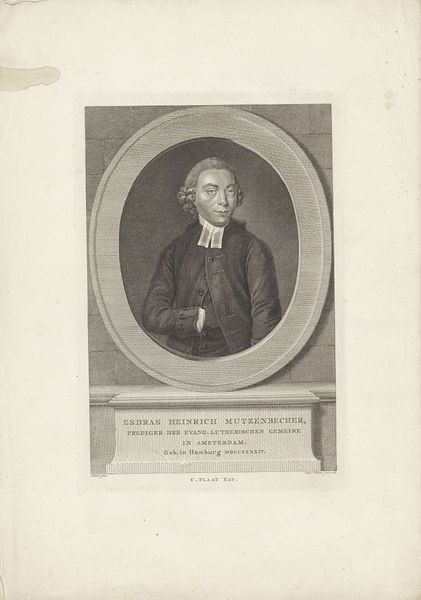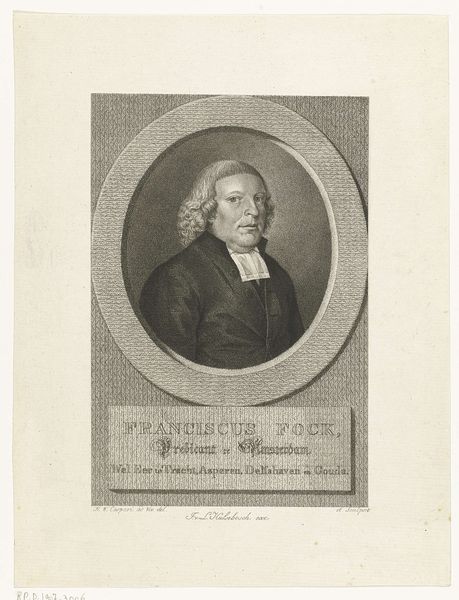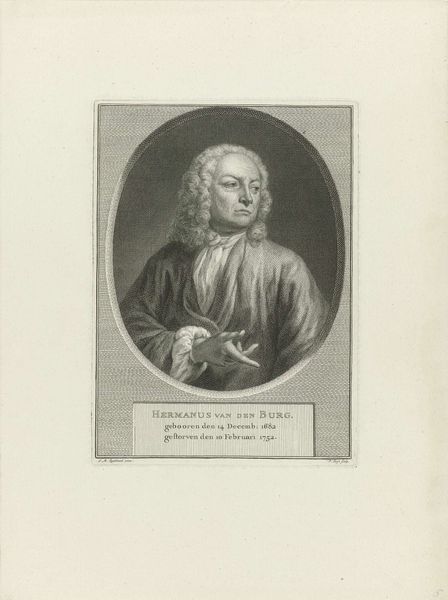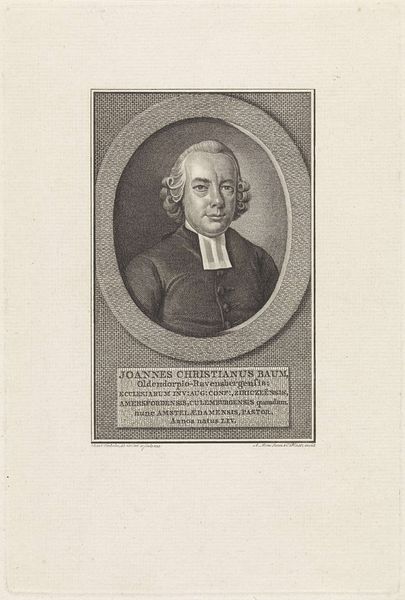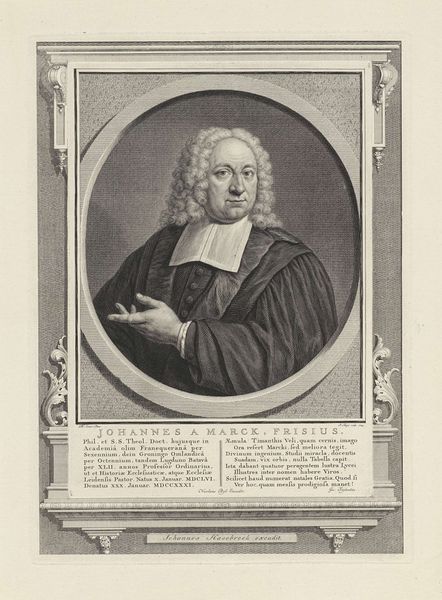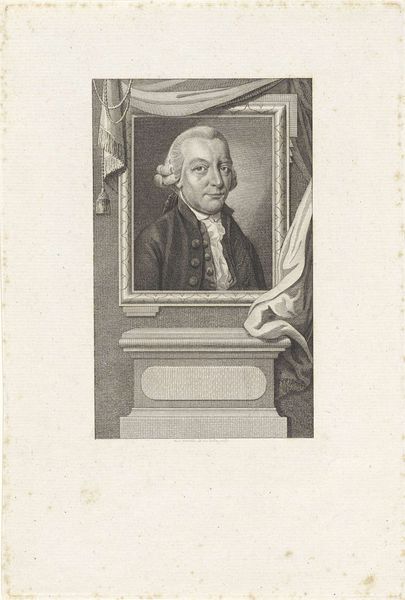
print, engraving
#
portrait
#
neoclacissism
# print
#
academic-art
#
engraving
Dimensions: height 243 mm, width 183 mm
Copyright: Rijks Museum: Open Domain
Editor: This is a rather formal portrait, an engraving from 1807 by Johannes Christiaan Bendorp, titled "Portret van predikant Adrianus Mandt." The sitter's got a stern look. The oval frame and the inscription below give it a very official feel. What do you see in this piece? Curator: I see the rise of a particular kind of civic identity being promoted. This portrait of Adrianus Mandt, a preacher, wasn’t just about representing him as an individual. It’s about conveying authority and respectability within a very specific societal framework. The framing, the clear inscription, all of it contributes to how the public *should* perceive figures of authority. Notice how the poem elevates the sitter beyond earthly bounds. Editor: So it’s less about him, and more about his role? Curator: Precisely! Consider the Neoclassical influence, suggesting order and reason—the visual language speaks to values that the burgeoning middle class would want to project and promote in their society. What are the implications, in your opinion, of showcasing ministers in such a formal and almost imposing way? Editor: Hmm, I guess it creates distance. Making him more of an ideal, perhaps less approachable as a real person? Curator: Exactly! These public images controlled the narrative, solidifying power structures within the church and, by extension, society. These printed portraits distributed authority but also became subject to debate about who deserved to be seen in this manner. Editor: I never considered how much a simple portrait could reveal about power and societal values. Thanks! Curator: My pleasure. It's fascinating how images become entangled with, and actively shape, historical narratives.
Comments
No comments
Be the first to comment and join the conversation on the ultimate creative platform.
